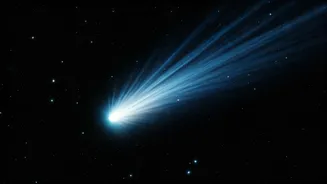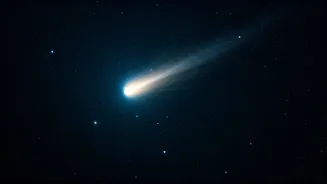Cosmic Visitor's Journey
The ATLAS interstellar comet, originating from another star system, made a close approach to the Sun. This celestial event offered scientists a unique
chance to study the comet's composition. Such comets, originating from beyond our solar system, provide a glimpse into the chemical makeup of other star systems. Studying these comets helps scientists better understand the formation and evolution of star systems, including our own. The event was closely monitored by observatories worldwide to gather crucial data about this distant visitor. The comet’s journey through our solar system offered valuable insights into interstellar objects.
Significance of the Event
The ATLAS comet's visit held immense significance for astronomers and space scientists. This close approach allowed for detailed observations of its composition and behavior. The comet's chemical makeup provided clues about the formation of its star system. Scientists used this opportunity to analyze the comet's tail and the gases it released as it approached the Sun. Such observations shed light on the processes that shape celestial bodies. Tracking the comet’s path and analyzing its spectral data helped researchers to refine models of interstellar objects. Studying interstellar comets provides key insights to our understanding of the universe.
Tracking Comet ATLAS
The comet’s path was meticulously tracked by observatories around the globe. This allowed scientists to predict its trajectory and time its approach to the Sun. Accurate tracking was essential for coordinating observations. Space agencies like NASA and ESA deployed advanced instruments to monitor the comet’s activity. These instruments collected data on the comet’s light, and gas emissions. The data was crucial for analyzing its composition and behavior. The tracking data enabled scientists to calculate its velocity. The meticulous tracking ensured the gathering of the most comprehensive dataset possible.
NASA and ESA Missions
NASA and ESA played key roles in observing the comet's journey. These agencies used their missions to gather data about its composition and behavior. Space-based telescopes and ground-based observatories coordinated to monitor the comet. The missions provided detailed spectral analysis of the gases released by the comet. Data from these missions helped scientists to study the comet's chemical makeup. The involvement of NASA and ESA highlighted the importance of international collaboration in space science. The coordinated efforts enabled a deeper understanding of this interstellar visitor. They collected valuable data on the comet’s light, and gas emissions.












